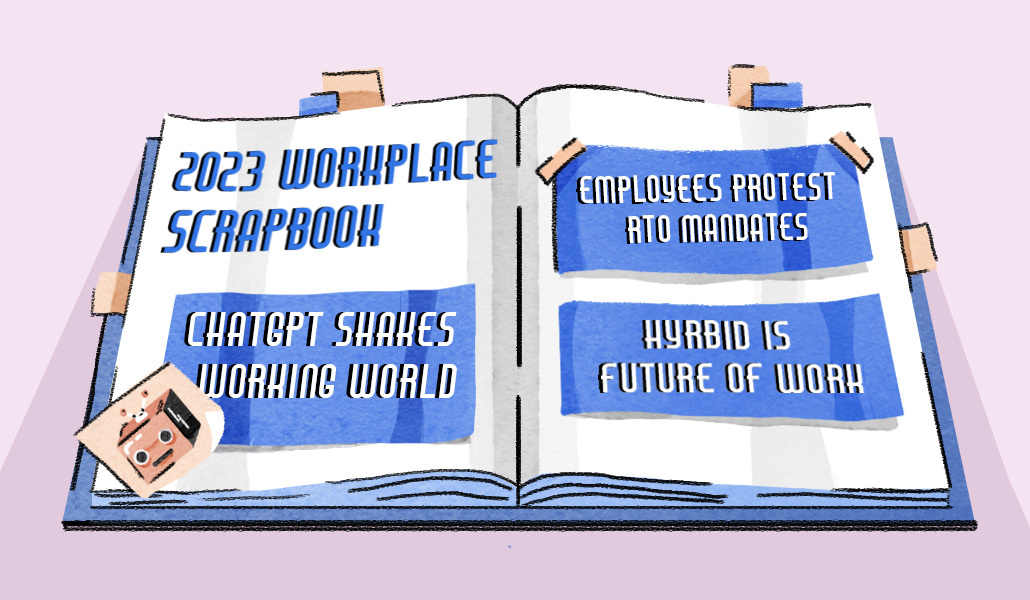A timeline of the year we returned to in-person work

The return to offices was a messy transition lasting the entirety of 2023.
Companies first launched initial requests for staff to return that went ignored by many who preferred to stay working at home. Employers then strengthened those requests and rolled out mandates, and a fraught tug of war ensued, that spanned months. Fears that in-office requirements were actually a disguise for layoffs grew, and some companies resorted to surveiling workers through badge swipes into the building, threatening penalties like negative performance reviews and possibly being fired.
Employers and their staff seem to have met in the middle with hybrid work arrangements – typically two or three days a week in the office – which have become a prevailing and widely accepted schedule.
“Some type of normalcy has come back to a degree, but we obviously haven’t gotten all the way back to some pre-Covid world where everybody’s back in the office, five days,” said Andy Challenger, senior vp at Chicago-based global outplacement and career transitioning firm Challenger, Gray and Christmas.
Here’s a look back at the year we returned to offices:
Initial rollouts
At the beginning of 2023, the pandemic seemed to finally ease alongside concerns of working in-person again. But companies weren’t going back to the way they’d always done things – instead, they moved into hybrid arrangements, expecting staff to come into the office a couple days a week. Company leaders figured there was no one-size-fits-all strategy as they entered a more experimental phase and toiled with their own individual strategies, but many soon realized scattered and non-mandatory attendance wasn’t driving the return they had envisioned.
Mandates start a tug-of-war
By the second half of the year a tug of war between employers and their staff ensued. Once companies realized they’d have to strengthen requests, they issued mandates requiring staff back on certain days of the week. But after years of working from home, some of their staff had moved away, and others simply refused to comply. A group of Amazon employees in Seattle walked off the job in protest over a mandate requiring them back for at least three days a week at the start of the summer.
Companies also began realizing how the new schedules were impacting turnover. Fully on-site companies also saw voluntary turnover rise 26% over the last six months, almost twice the rate seen with fully remote workers, an August survey from Gartner found.
CEOs get tough
But that didn’t stop major CEOs from taking an even stronger stance at the end of summer. They justified mandates by saying a firm RTO policy would help foster greater collaboration, boost productivity and enhance company culture – opportunities to do so had been lost while working remotely, they claimed.
“But just bringing people together physically doesn’t guarantee either of those things,” said Jim Kalbach, chief evangelist at Mural, a digital collaboration platform.
Amazon CEO Andy Jassy told staff unable or unwilling to comply with the company’s RTO policy in September that “it’s not going to work out for you,” according to Business Insider. Even Zoom, a company that championed and made remote work possible for many, announced it would require staff to come back in hybrid arrangements. Employers like TikTok and Google also announced plans to track badge swipes to monitor attendance.
Those moves also brought fears that RTO mandates might actually be layoffs in disguise. At AT&T, about 60,000 managers were told to come back to the office by September, though with just nine office locations across the U.S., some 9,000 employees were left with the decision to quit or relocate.
That came as declining worker leverage became more clear, as the Big Stay began in earnest and the Great Resignation came to a close. “We moved out from worsening and worsening labor shortage where employees seemed to have much more leverage in the labor market to a labor market that started cooling down,” Challenger said.
“It feels like we’ve reached closer to an equilibrium between employers and employees. And I think that it really shows itself in the percentage of companies that have gone to a hybrid workplace, like the compromise between two really entrenched positions,” he said.
Hybrid work becomes accepted
By the end of the year it appears employers and their staff have reached somewhat of a compromise, with hybrid arrangements allowing staff to work remotely partially, and in person with varying frequencies depending on company.
“The acceptance of hybrid work happened this year,” said Josh Bersin, global industry analyst and CEO of Josh Bersin Co. “[Employers] began to come to grips with the fact that hybrid work is the preferred model of work for most employees and it’s probably better for the productivity of many, many people in many, many jobs.”
By the end of this year, some 88% of companies are now mandating employees work a certain number of days in the office, with hybrid arrangements becoming widely accepted, according to data from hybrid work management platform Robin. But their arrangements vary widely, as they’ve tried different strategies this year and finally landed on whatever works best for them individually — for now.
Just 3% are mandating one day a week in office, 16% are at two days, 26% are at three days, and 52% are at four days, according to that report, which included responses from over 500 business owners and facilities managers.
Some companies have turned to more novel arrangements, like those requiring staff back just once a month. Corporate catering company ezCater and makeup brand Benefit Cosmetics as well as smaller companies, like airport management solutions company AeroCloud and insurance company Assurance IQ, are some examples of those adopting this model.
“The default assumption was the frequency with which people needed to be together in person in order to save collaboration and culture, was on a weekly basis,” Kalbach said. He expects companies will continue revising their exact policies, and further consider the frequency of in-person work required to meet their goals related to RTO efforts, he said.


